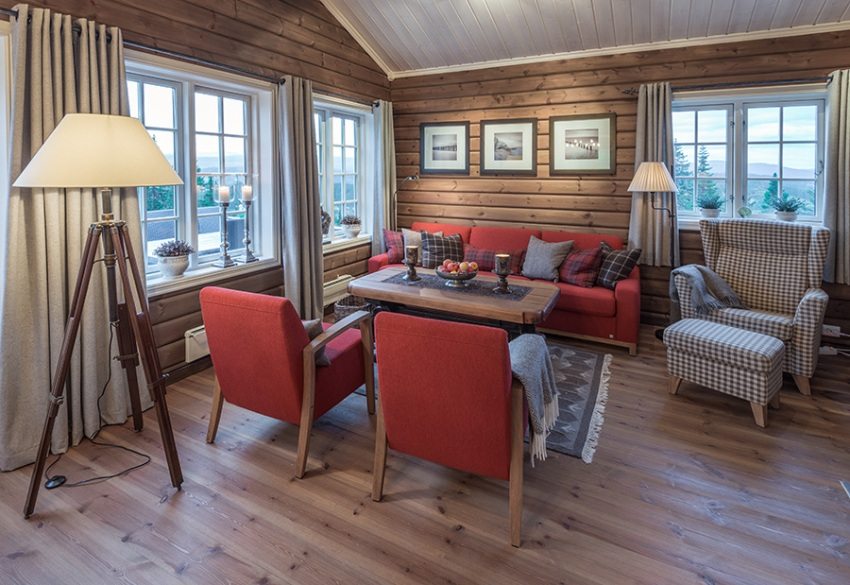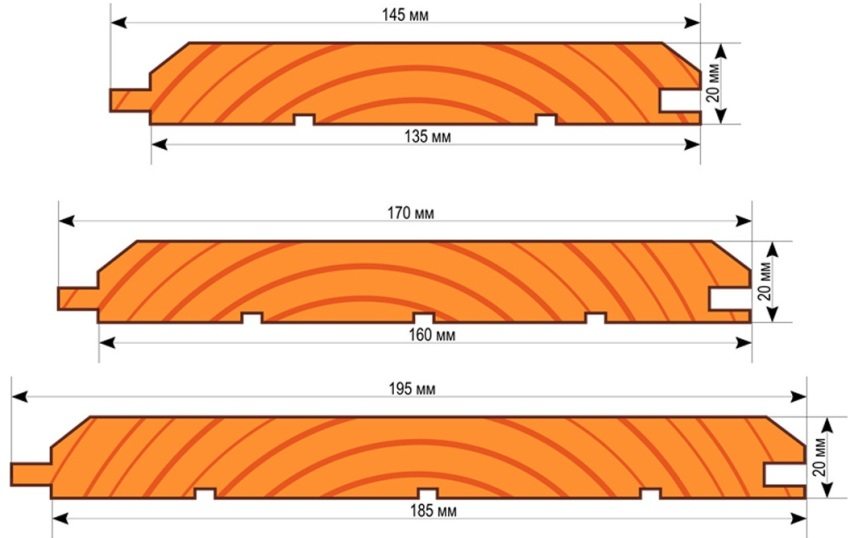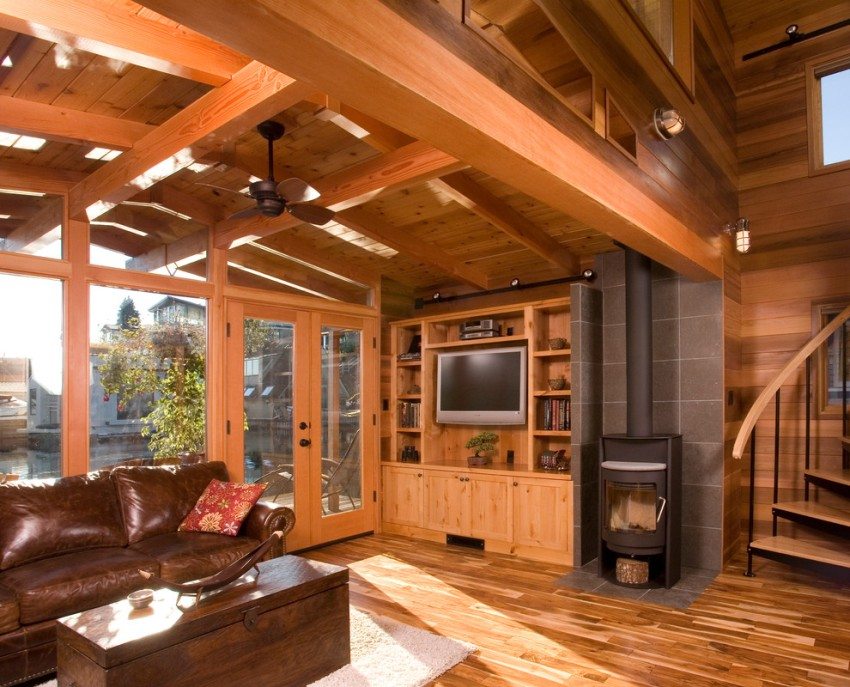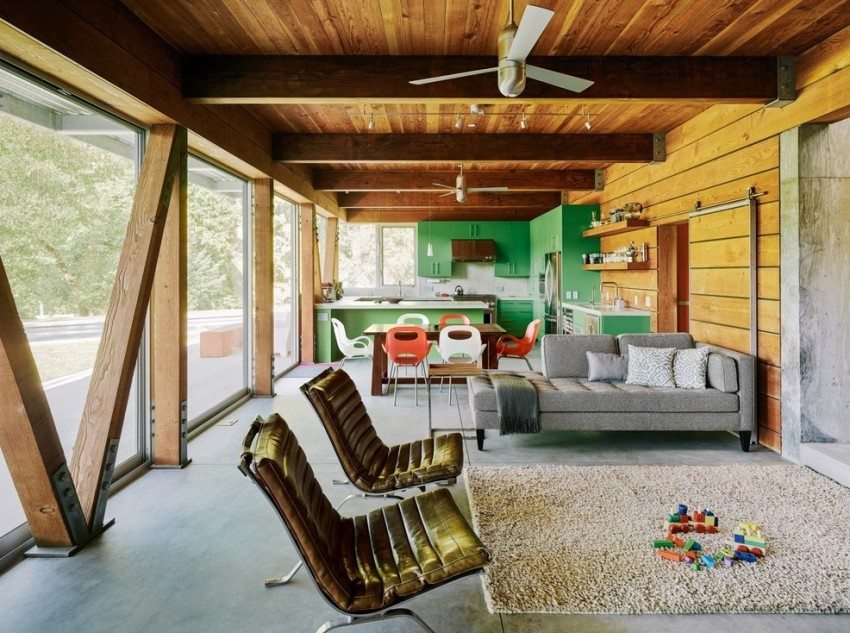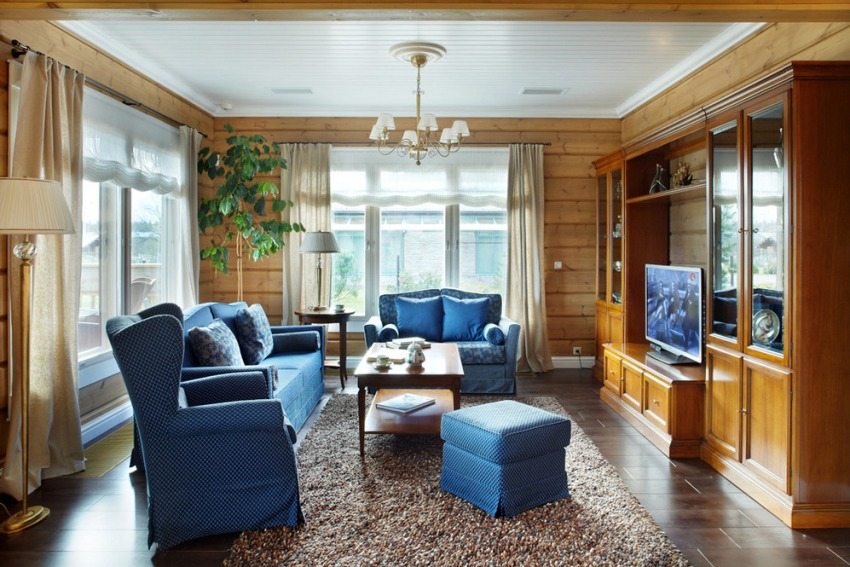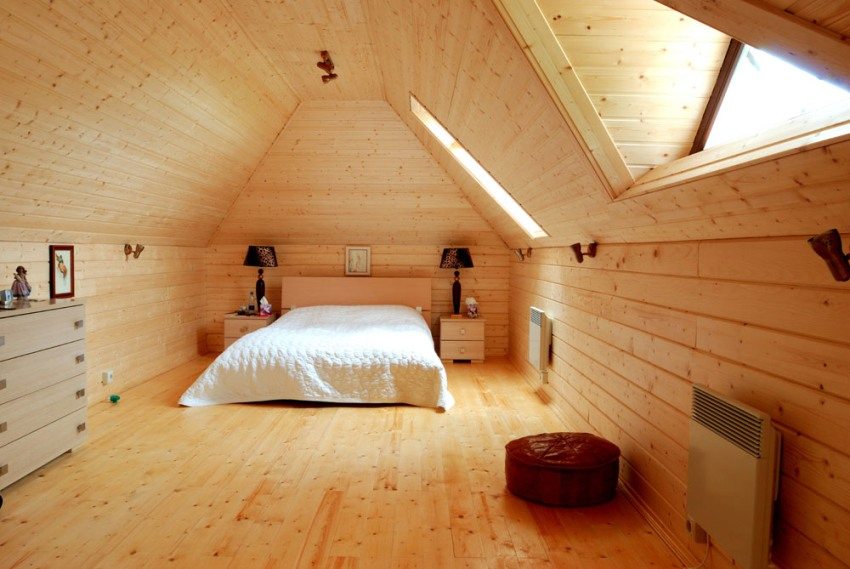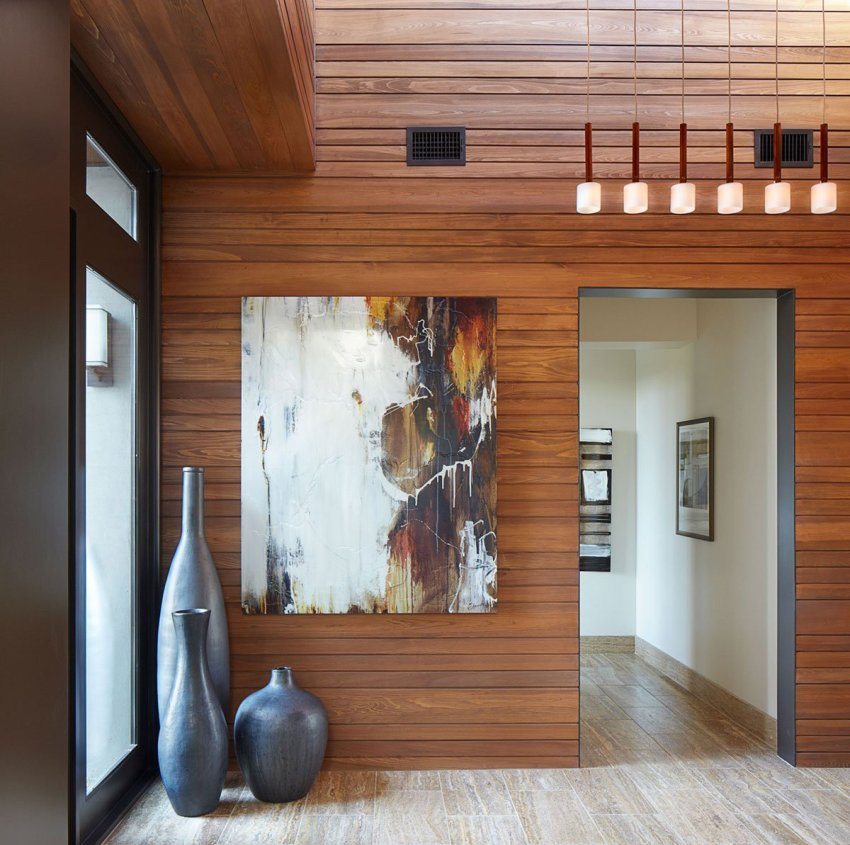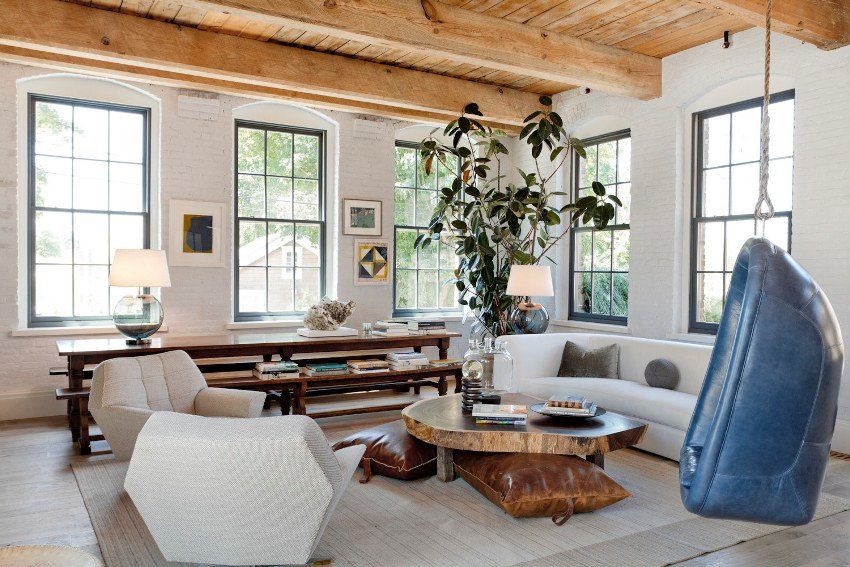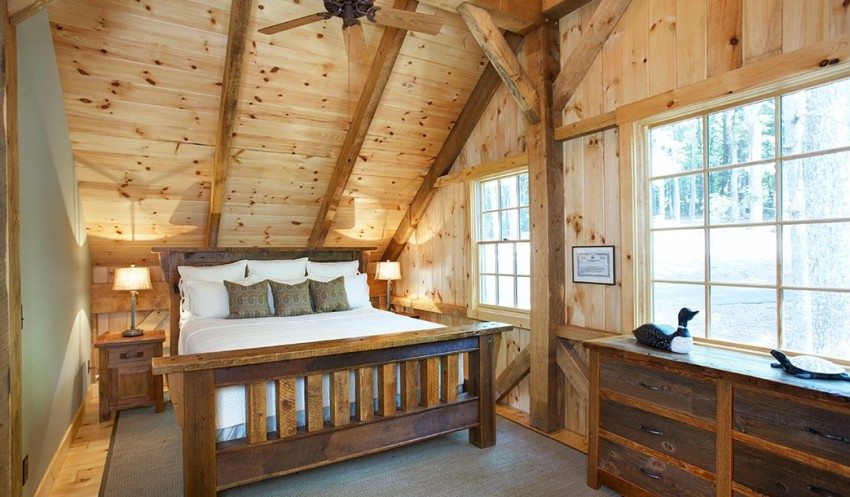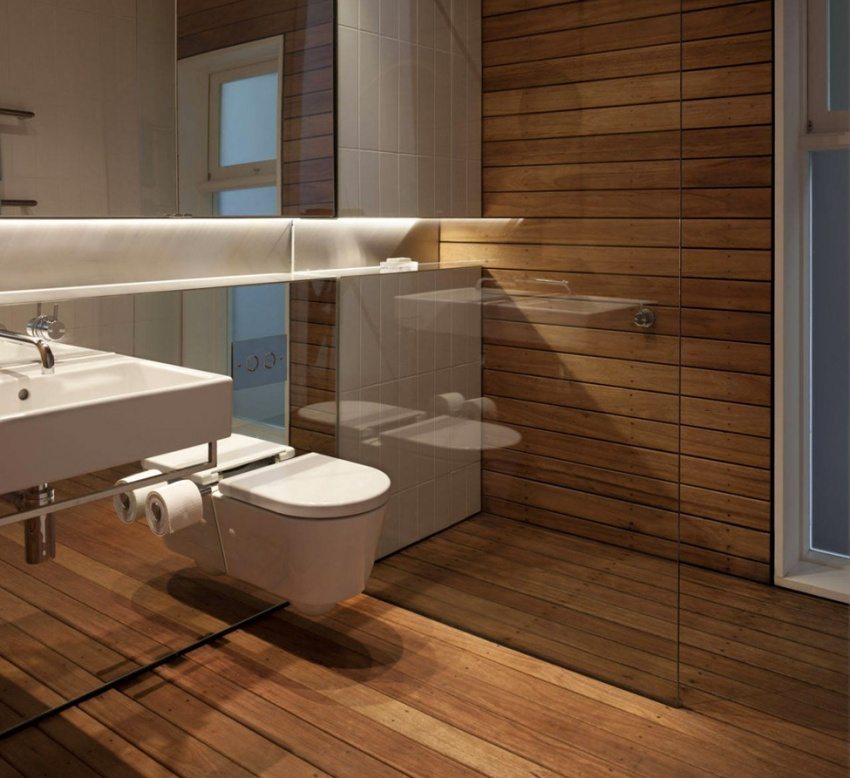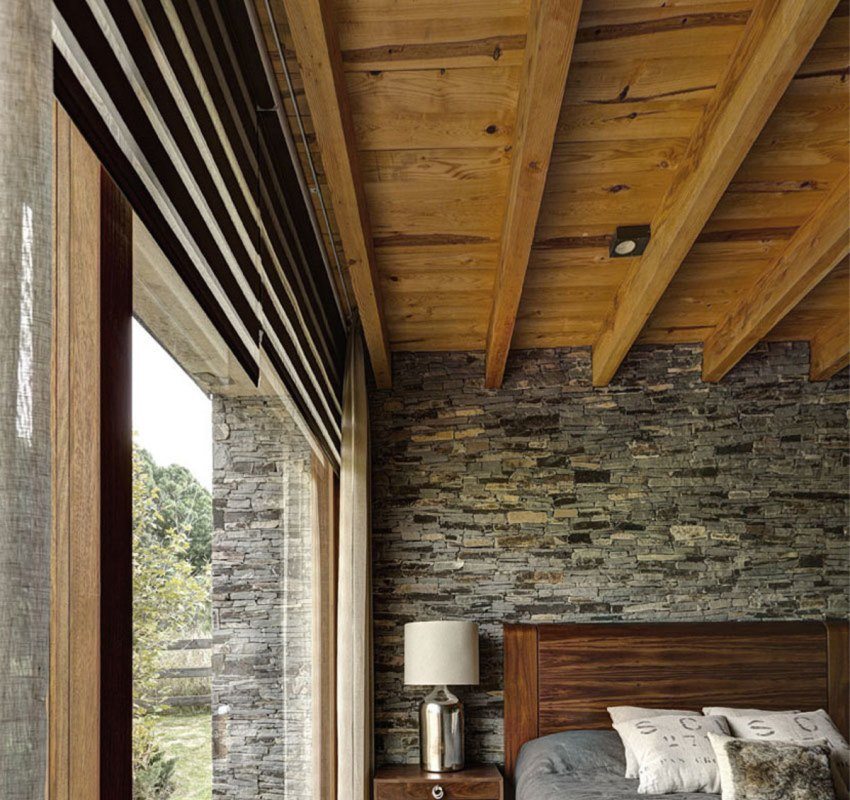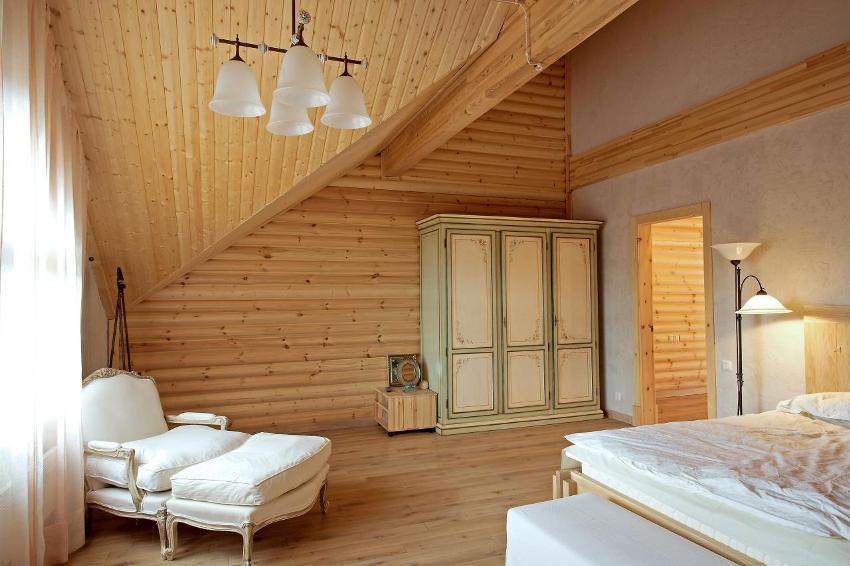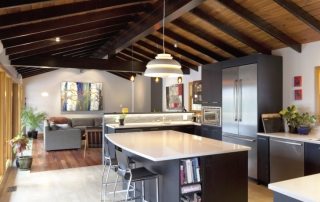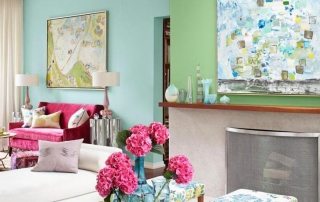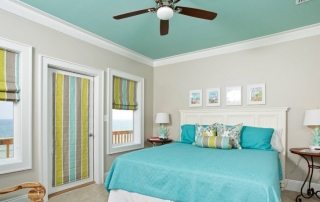A rather interesting and economical option is considered to be interior decoration with imitation of a bar. The photos presented in this article demonstrate the beauty and richness of interiors in the Russian style, which is very popular in our country. The material used for such indoor wall cladding is environmentally friendly and durable. With its help, you can create a cozy, warm atmosphere in the home, imitating the decoration with real wooden beams.
Content [Hide]
Timber imitation: pros and cons
This material is considered one of the subspecies of the euro lining. For its manufacture, coniferous or deciduous tree species are used. It has a number of quality advantages:
- does not shrink due to grooves;
- the lining process is easy and does not require any special skills;
- does not change color when exposed to sunlight;
- low cost;
- resistance to temperature extremes.
An interior finish with imitation of a bar is suitable for almost any room. Photos of rooms lined according to the design project are the main confirmation of this. There are practically no downsides to this material. They can only arise if the manufacturing process is violated by unscrupulous manufacturers. Low-quality panels crack quite quickly. To avoid problems in the future, it is necessary to carefully consider the choice of wood products.
Interior decoration with imitation of a bar. Photo options
Imitation of a bar allows you to finish the premises in a short time. Each version of the panels differs in length, width, material of manufacture.
Related article:
Finishing a wooden house inside. Photos of original interiors. Beautifulphoto of finishing options in the interior of the rooms. Subtleties, nuances and basic rules for decorating walls, ceilings, floors.
Wood grade and color
The selection of colors for wall decoration takes almost the first place among the criteria by which imitation is chosen. Each tree species has its own unique structure and color. So, for example, the plates of pine imitation can be sandy in color, but there are also pale pink shades with a slight admixture of yellowness. These colors are ideal for use in general areas: living rooms, dining rooms, hallways.
The cedar imitation is considered the darkest. Cedar is one of the species that, in addition to a good shade and beautiful texture, also has antibacterial properties. Cedar wood panels have a delicate, pleasant scent, but they should not be used in bedrooms, as this can lead to frequent headaches.A similar option for interior decoration with imitation of a bar looks quite impressive and rich. Photos of interiors demonstrate all the beauty and nobility of this tree species.
In cold rooms and rooms with high humidity, where condensation often occurs, it is best to use Karelian or Angora larch. A delicate, pleasant shade from pale beige to light yellow helps to make rooms brighter and visually larger. Larch is resistant to moisture, but it has one small drawback: during processing, due to the hardness of the rock, it is very difficult to grind and remove small burrs. Due to its increased thermal insulation properties (by about 25% compared to other species), imitation from larch is used for finishing baths, saunas or baths.
Larch species are used much less often for imitation. For this, oak, linden or alder are used. High quality and durable oak wood, although expensive, will serve its owner for many years. For a bath, you can take a linden imitation, and when finishing children's rooms it is worth trying a breed like alder. It has a soft reddish tint and is quite easy to process. Despite its softness, this breed is very resistant to external influences, abrasion or cracking.
How to correctly calculate the material
For the convenience of calculating the amount of material, it is worthwhile to first prepare a detailed plan for the location of each imitation of a bar. The interior decoration, the photo of which is shown below, was done horizontally, so for an accurate calculation it was required to measure the width of the room and know the thickness of one panel. The length of one plate should be approximately equal to the width of the room so that less waste is left during finishing.
Panels imitating timber can be different in width. This figure can reach 100 cm. But even the narrowest plates visually differ from ordinary lining, creating a unique effect of log masonry. After choosing the material, they begin to interior decoration with imitation of a bar. Photos of some of the stages are shown below.
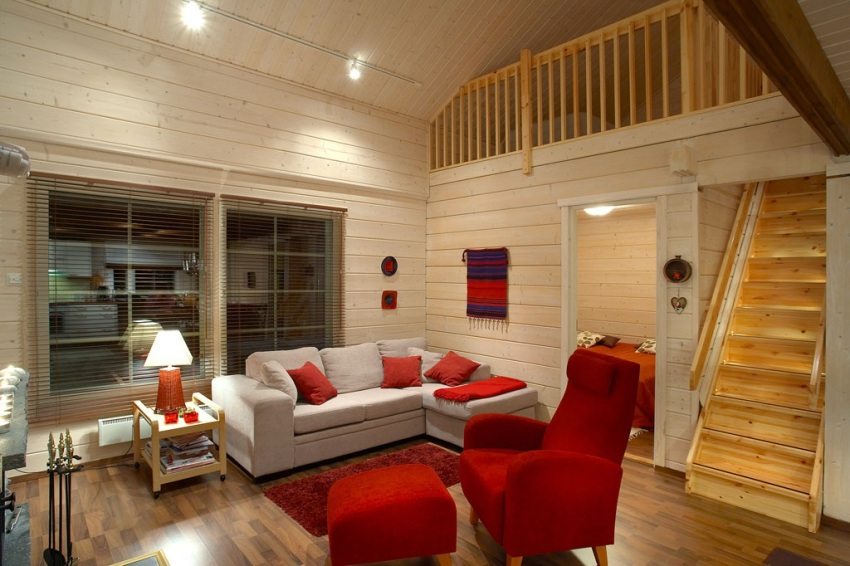
Imitation of timber on the walls and ceiling creates a unique coziness of a wooden house
Useful advice! Often, with a large wall width, a vertical line of joints is formed. To prevent this from happening, the panels should be staggered.
Installation of imitation timber
If you plan to install imitation indoors, then to lay a layer of insulation not worth it. Thermal insulation should be outside the room. For DIY finishing you will need:
- metal profile or bars measuring 25x25 mm;
- self-tapping screws or other fasteners;
- vapor barrier film;
- sander with fine-grained attachment;
- any surface coating products.
Useful advice! Before starting the cladding, the material must be kept for at least 2 days at room temperature. This is necessary so that the imitation does not warp or crack after installation.
Wall covering
Before finishing, the walls must be cleaned of dust, dirt, debris. If the installation is carried out in wooden house, then they should first be treated with a special antiseptic to avoid the appearance of insects, as well as harmful fungi and mold. After impregnation, 24 hours should pass and the installation of an imitation of a bar can begin.
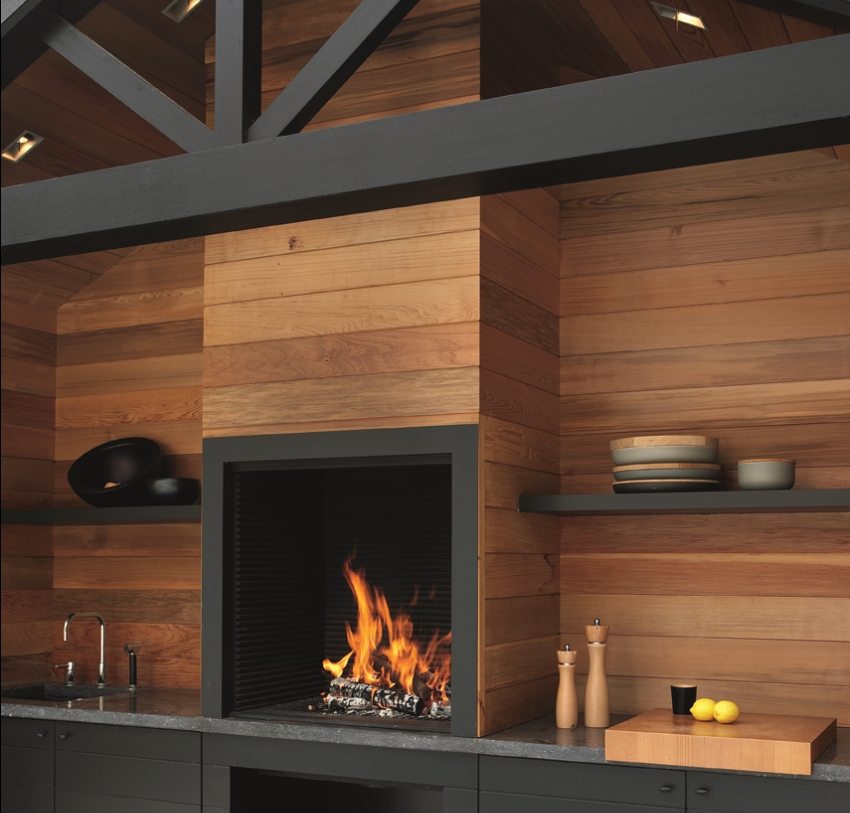
Kitchen apron decorated with imitation of timber
First they attach to the wall vapor barrier, for this they use a special construction stapler. The film is laid with the smooth side against the wall. In this case, the heat remains inside the room, and the air circulation is not limited. The vapor barrier film is attached to a concrete or brick wall using a crate.
When the panels are arranged horizontally, the lathing must be fastened vertically, starting from the bottom with a step of 60-70 cm. The step size may vary when using different types of wood. For light pine species, it can be increased to 80 cm, and for heavy ones, it should be much less. If the mount is on a wooden wall, then you need to use self-tapping screws, but if on a concrete or brick wall, then dowels will do. To make the walls even after finishing, the lathing is performed according to the level.
In those places where it is planned to put furniture or household appliances, it is necessary to provide bars under the cladding for easy attachment to the walls. The imitation installation is carried out on the finished crate. You need to start from the floor, going up to the ceiling. The first panel is leveled and fixed with special fasteners called clamps. If they are not there, screws will do, but it is better to drill them at a 45º angle.
Ceiling cladding
For finishing the ceiling, it is recommended to equip the crate with a reduced pitch. It should be approximately 40-60 cm. The slats or profile are placed in length from the window. It is also better to lay the imitation from the outer wall, so the seams are less conspicuous. For finishing the ceiling it is better to use thinner and lighter plates in order to visually increase the height of the ceilings.
Upon completion of the cladding, it must be covered with protective compounds intended for interior work. Then sanding is performed to clean the imitation of unnecessary irregularities and burrs. After that, the surface is primed and coated with paints and varnishes. For best results, apply a second coat after the varnish has dried.
Useful advice! There are pre-painted panels imitating timber. The price of such products is slightly higher, but you don't have to fiddle with paints or varnish.


